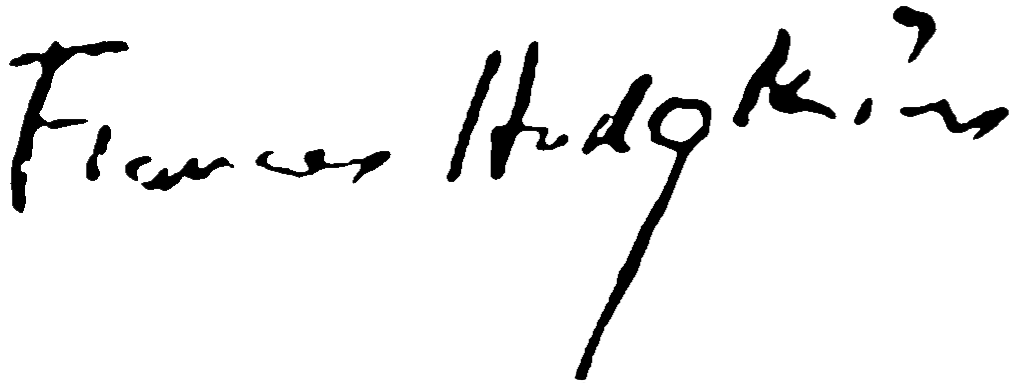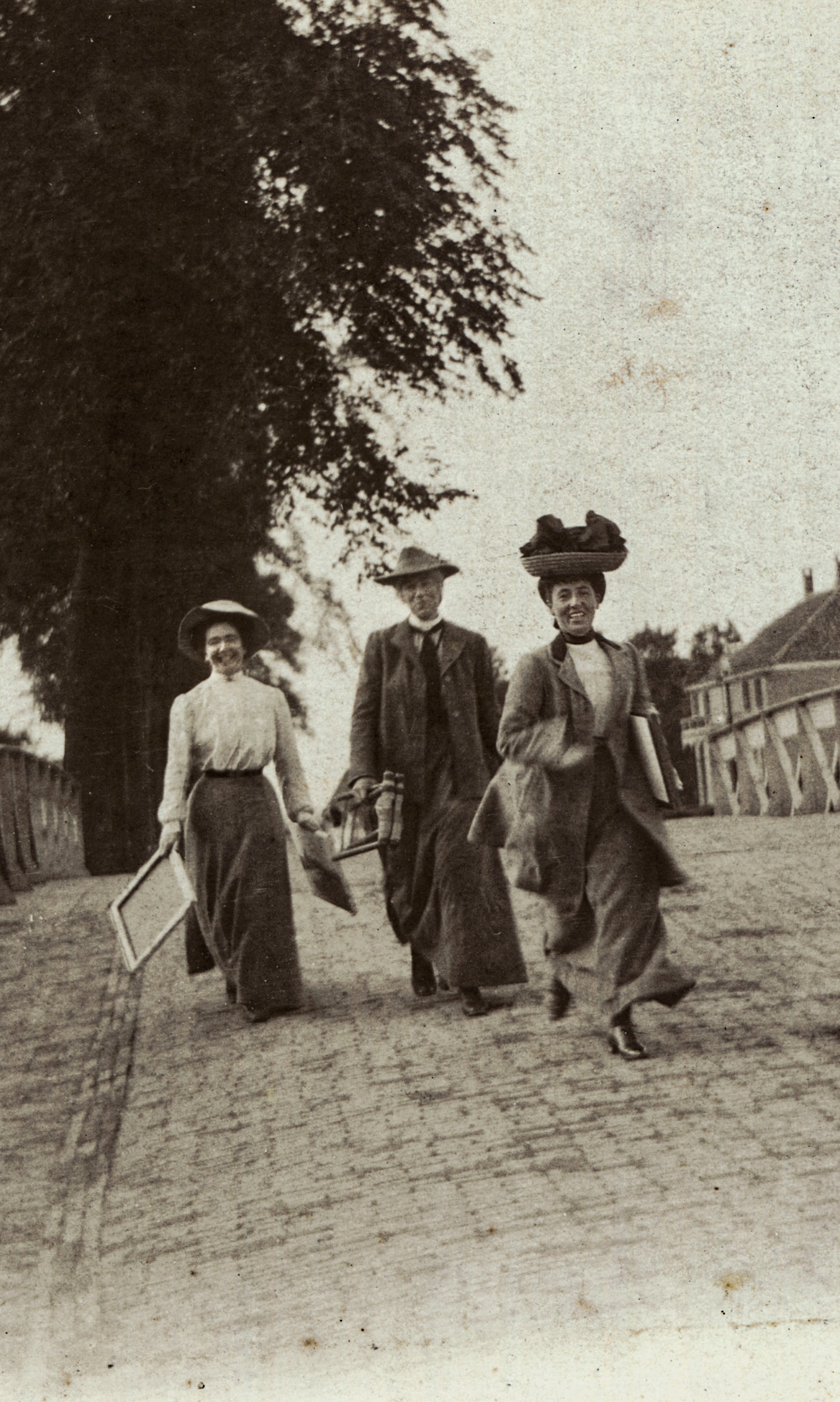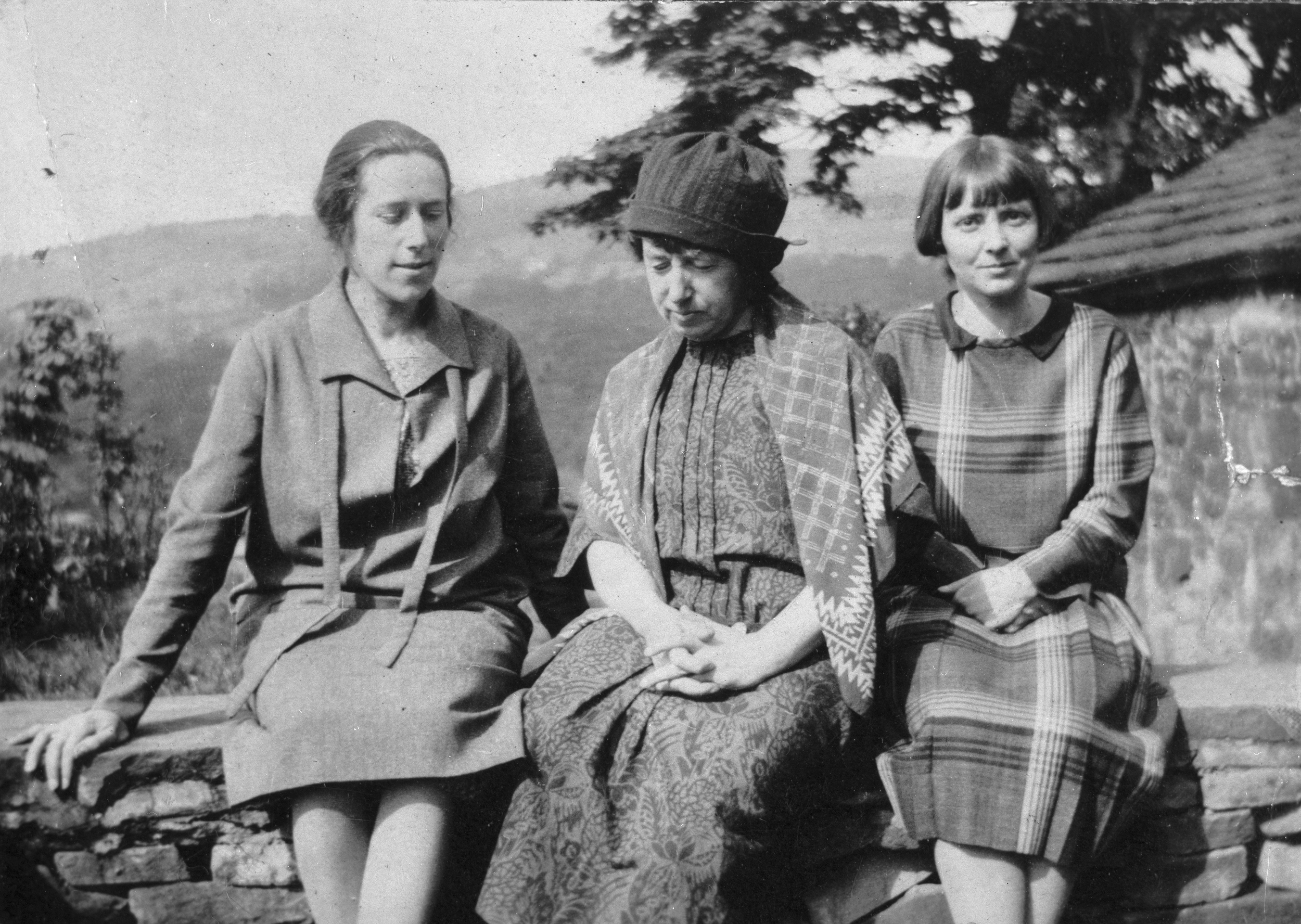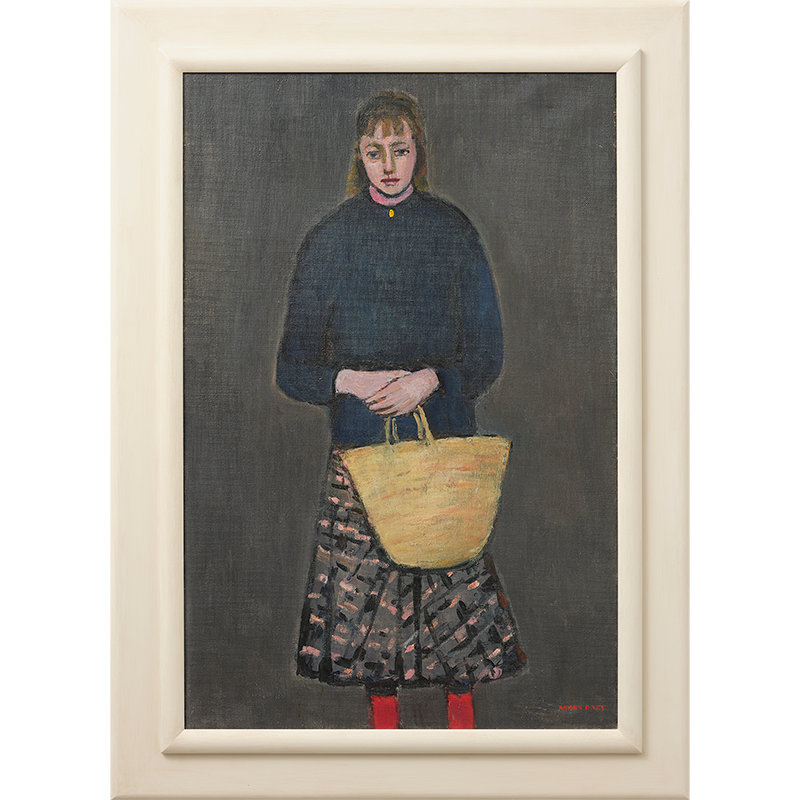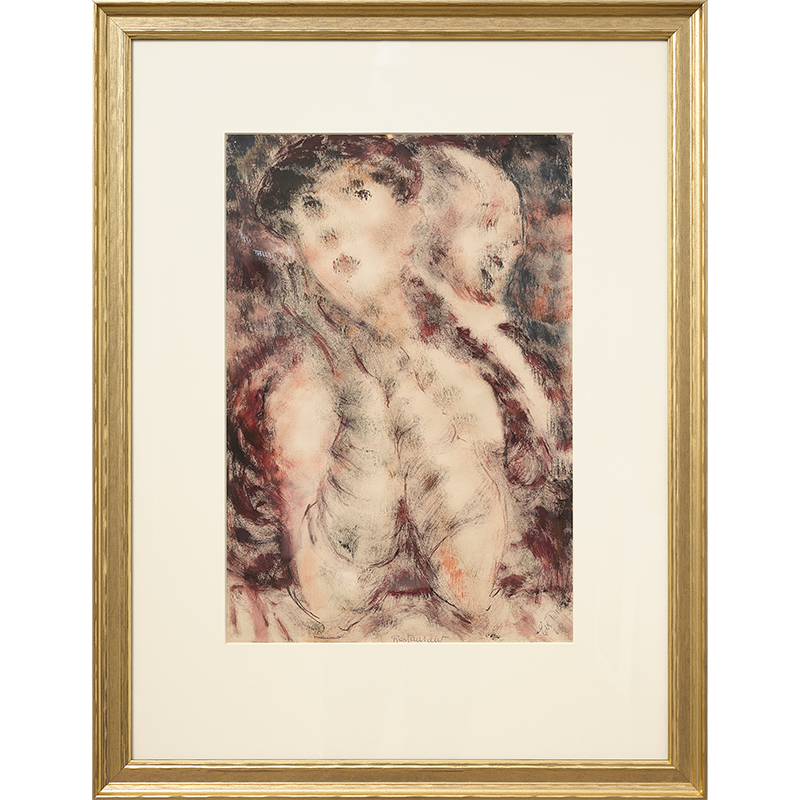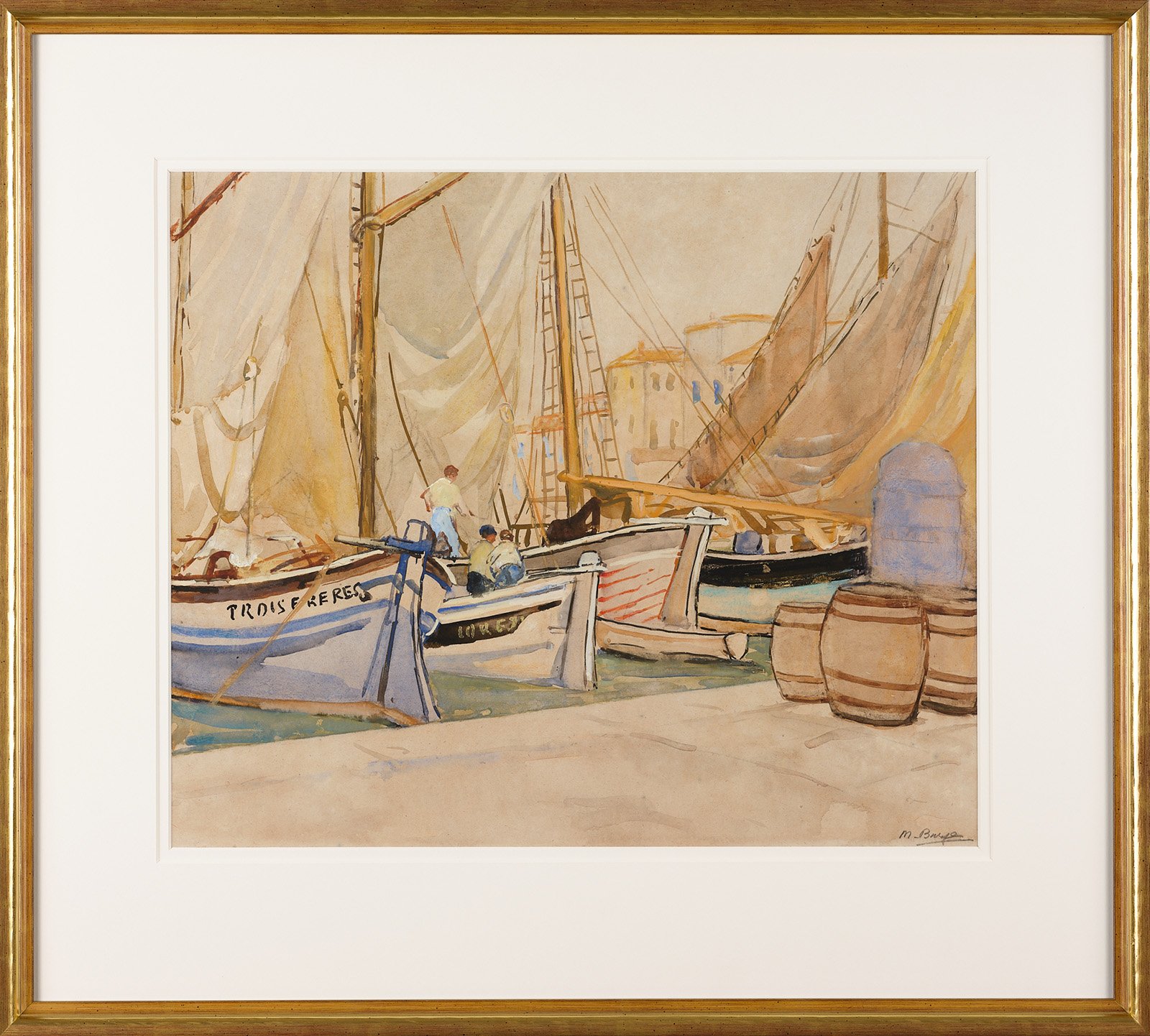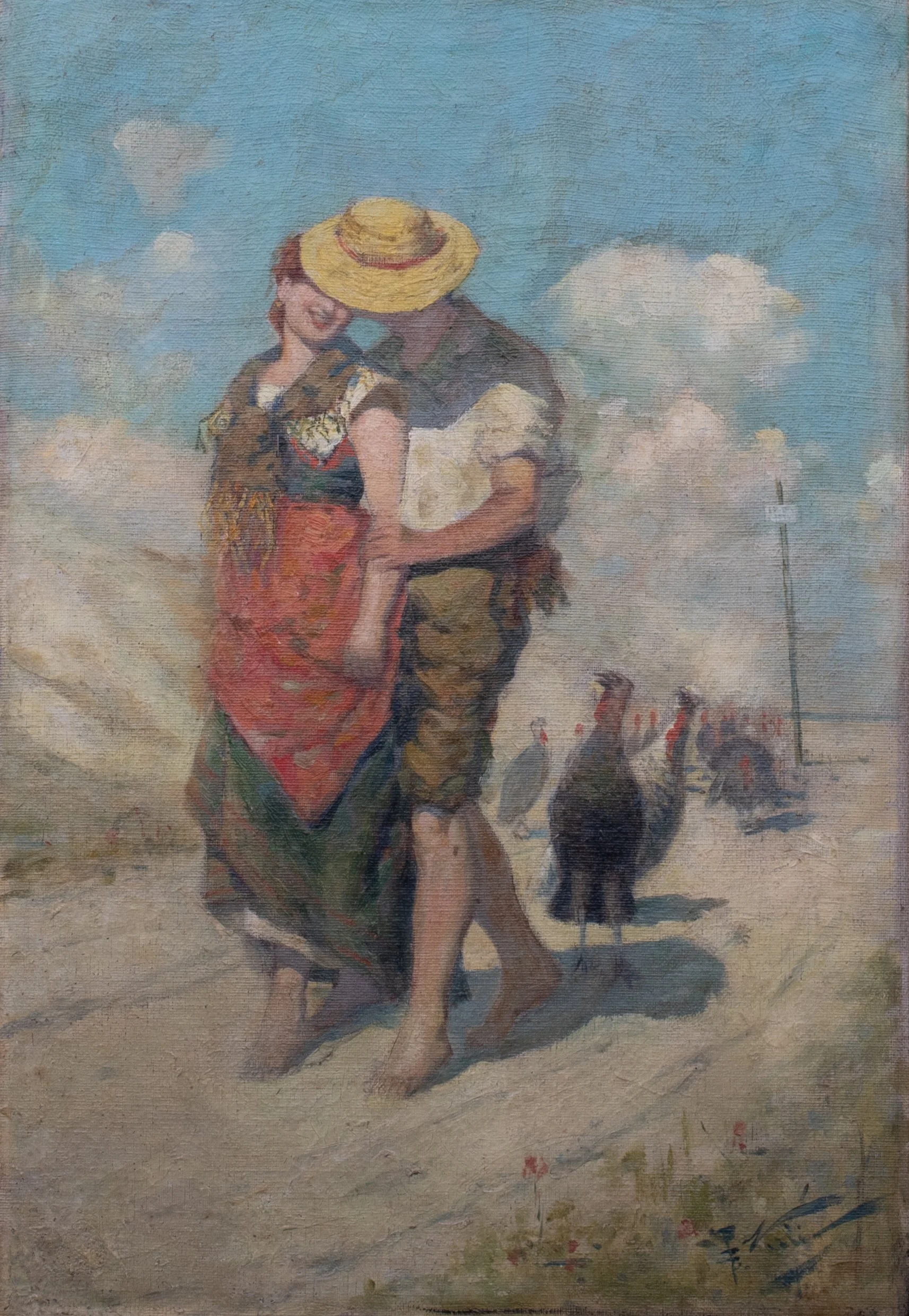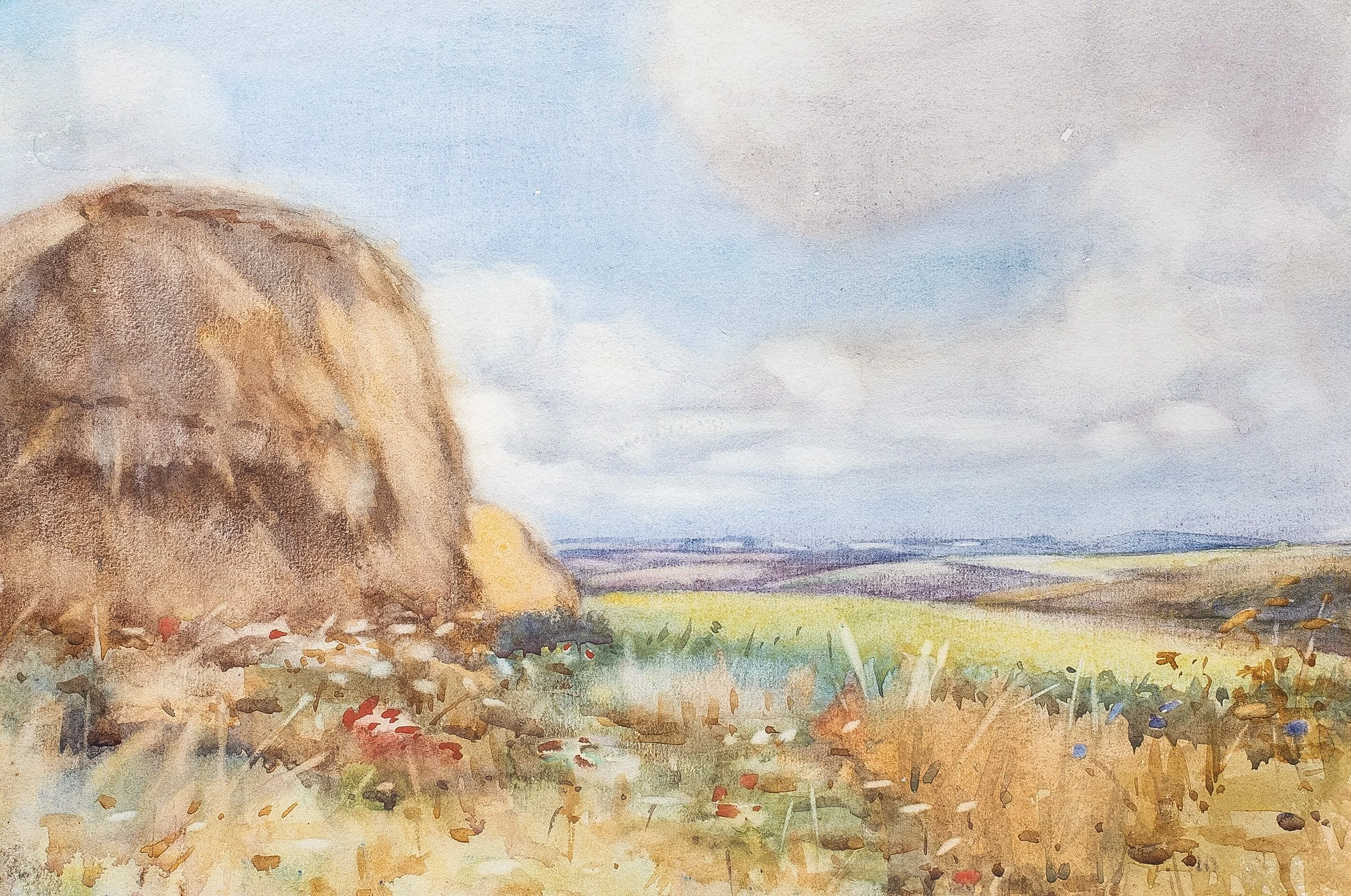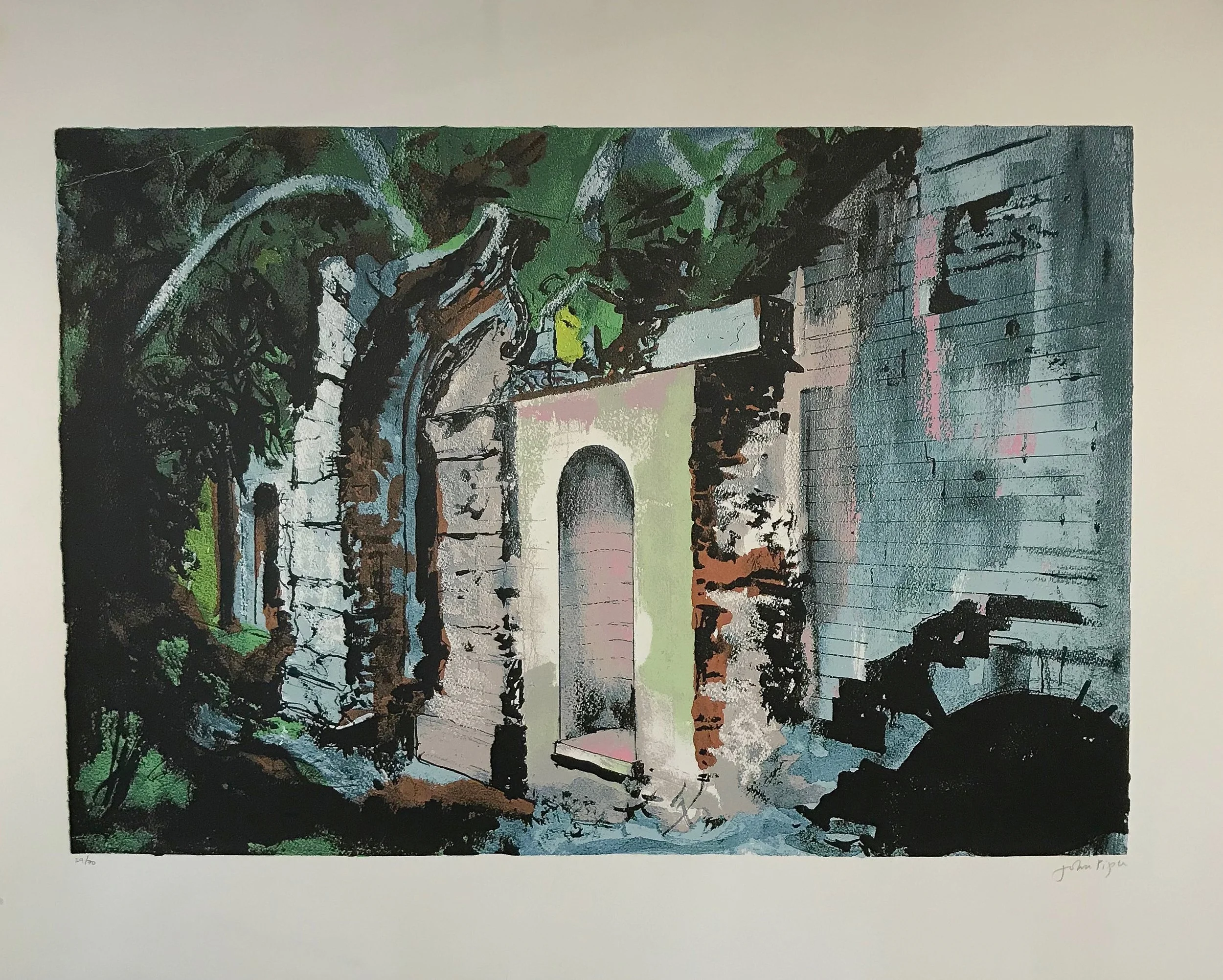““ [Miss Richmond] has been so good & unselfish looking after the class in Mrs Garstin’s absence ... I would have come back howling with loneliness & homesickness long ago if it hadn’t been for her - I owe any success I have to her sympathy & support.””
Frances Hodgkins individuality and ability to inspire fostered the development of lifelong friendships. Her students became friends, friends became collectors, and collectors in turn supported her and promoted her work ceaselessly. The respect and admiration felt by many is clearly evident in Frances’ correspondence. She wrote frequently to family and friends and reading through her correspondence one gets a rare insight into the remarkable relationships that the artist forged.
““My dearest old girl
Words can’t tell you how happy your last two letters made me. Such dear letters full of warm generous sympathy, tho‘ far, far too much praise. It rejoiced my heart to hear that you approved of my work. I care so dreadfully for your & Dr. Scott’s opinion and I hardly dared open your letter.””
The development of her own career was singularly important to Hodgkins. She extended her practice and continued her study in France by enrolling in Penzance-based artist Norman Garstin’s sketching classes. During their association Garstin introduced Hodgkins to a number of leading British artists, including Stanhope Forbes and Lamorna Birch. It is during this period that she also formed a close friendship with fellow New Zealand artist Dorothy Kate Richmond. After arriving in the artist’s colony of Dinan, Brittany, she wrote to her mother:
‘I found Miss Richmond already installed when I arrived and winning all hearts by her sweetness & beauty ... I am a lucky beggar to have her for a travelling companion. She is so restful & sweet and I think we suit each other well’.
They travelled together in Europe on many occasions, painting together in France and Italy. On their return to New Zealand in 1906, they set up a studio in Bowen Street, Wellington where they exhibited 80 of their European paintings together.
In order to appreciate the importance of the relationships she formed with some of the artists featured in this exhibition one has only to look at the significant body of portraits of friends and benefactors in Hodgkins’ oeuvre. There are two paintings by Elsie Barling in this exhibition and the close relationship between Hodgkins and her former students who later became lifelong friends is borne out by the eloquent drawing of Barling (Auckland Art Gallery Toi o Ta ̄maki). Drawn whilst Hodgkins, Barling and Dorothy Selby were staying in a cottage in Sussex in 1929, the portrait captures Elsie as she descended a staircase. Hodgkins later gave the portrait to Selby as a Christmas present in 1931, inscribing on the mount “Of a friend to a friend by a friend”.
Hodgkins also painted two outstanding ‘double’ portraits of friends and supporters Hannah Ritchie & Jane Saunders and Katharine & Anthony West. Ritchie and Saunders, both students of Hodgkins since 1911 and 1912, drew her into their milieu of influential literary and artistic friends in Manchester. Their network included Forrest Hewit, chairman of the Calico Printers’ Association, who helped her secure a job as a designer on a salary of £500 a year. The double portrait of Hannah Ritchie and Jane Saunders (Hocken Library, Dunedin) was commenced in Manchester in 1922 and finally finished and presented to her friends three years later.
Two of Hodgkins’ closest friends & benefactors later in life were Katharine and Anthony West. Frances stayed with the Wests on their farm on several occasions and in the autumn of 1941 recuperating there after surgery and they continued to send Hodgkins food parcels during the war years. Double Portrait No. 2, (Museum of New Zealand Te Papa Tongarewa) features the couple, painted from previous sketches made at Chisbury Manor in 1939.3 Katharine West was a well exhibited painter and several of her own paintings appear in this exhibition under her maiden name Katharine Church.
One of the more significant relationships to form over the course of her life was with artist and art critic John Piper and his wife, the writer Myfanwy Evans. Frances wrote to them in May 1940 ‘... I was made so very happy by what you & John wrote about me and I owe you very particular thanks. It gave to my show all the success I could hope for it ... Goodness & Beauty must persist dear Myfanwy & Love is the keynote. When shall we meet again? Soon I hope - All my love Frances’.
Piper often reviewed Hodgkins exhibitions and Myfanwy was commissioned by Sir Kenneth Clark to write on her career for the Penguin Modern Painters series
One of the longest and perhaps greatest friendships in Hodgkins time in England was with potter, Amy Krauss, who had first studied under Hodgkins in St Ives in 1915. When Hodgkins was living in ‘an old stone barn’ in Burford in 1923 she invited Amy to come to Burford with a crate of pottery and her wheel and found her a shop in the village in which to sell her pottery. Hodgkins described Amy thus, ‘everyone likes her – she is a downright good sort & extremely capable – both as a painter & potter. Earns her living like all of us’.
Later, in 1936 once again searching for new pastures in Dorset, Frances stayed for a few weeks at Amy’s home Redlane Cottage in East Street, Corfe Castle. Returning again in May 1936 after her trip to Spain, Frances wrote to Duncan Macdonald that she was looking for ‘a quiet corner where I can chrystallize the afterglow of my Spanish memories – before they grow dim’.6 Staying at Amy’s cottage in East St and working out of her rented disused Wesleyan Chapel studio in West St, conveniently just a short walk through the village allotments cutting through a narrow passage into West street just behind her studio.
Amy played a pivotal role in Hodgkins’ life. It was Amy who picked her up from the West’s farm after her recuperation from surgery in August 1941 and cared for her at Redlane Cottage until she was fit enough to return to her own cottage and studio in West Street, Corfe Castle. It was Amy who drove her up to London on the closing day of her final exhibition, the Retrospective at Lefevre Gallery in 1946. They were escorted around the gallery by Duncan Macdonald and by chance met Jane Saunders who was also visiting the exhibition. Amy’s final act of their enduring friendship was to arrange the return of Frances’ ashes to her family in New Zealand after her funeral in Dorset in 1947.
In this small catalogue it is impossible to mention all of the artists, friends, supporters and gallery owners who cherished and supported Frances Hodgkins. This exhibition brings together a series of works dating from 1888 to 1987 and while the exhibition focusses on the relationship between Hodgkins and her circle of friends and fellow artists, it also acknowledges the outstanding career of a number of prominent 20th century New Zealand and British artists. Upon their return to Aotearoa with fresh ideology and overseas experience, the influence of her students Dorothy Kate Richmond, Gwen Knight, Edith Collier and Flora Scales, to name but a few, cannot be underestimated. Their skill and particularly their ability to teach European Modernism and illustrate these ideas in their works had a profound effect on the development of New Zealand art in the 20th Century.
_
Written by Jonathan Gooderham
